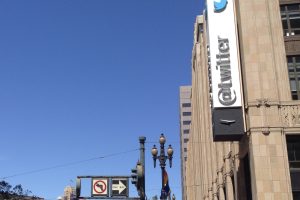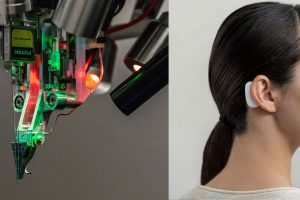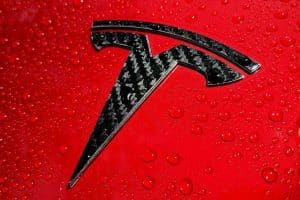For several years, the overall debate about self-driving cars and who’s in the lead in that arena has hardly changed. To start this piece, I’ll just spend one paragraph on that debate for some context in case you are just jumping into this topic.
More or less, Tesla is trying to teach cars to drive in a way that humans do — able to respond to all sorts of scenarios not just from programming/specific code related to each scenario but also from “driver common sense” of a sort and Tesla cars learning from their own experience. As it collects data from the million-plus Tesla cars on the road, Tesla feeds those data into neural nets for the machine learning magic that is supposed to make that happen. Most others in the field don’t see this as a viable approach (or at least won’t admit it if they do) and are focused on a combo of precise mapping, programming/coding for different specific scenarios, and some more limited degree of machine learning. The most prominent company in the latter camp is Waymo, which is underneath the Alphabet umbrella and evolved out of Google’s quite old (decade+) self-driving vehicle program. Waymo CEO John Krafcik thinks Tesla’s approach leads to a dead end. “For us, Tesla is not a competitor at all,” he said. “We manufacture a completely autonomous driving system. Tesla is an automaker that is developing a really good driver assistance system.” Tesla CEO Elon Musk, on the other hand, is extremely confident that Tesla will reach the technological capability for safe robotaxi-level operation before 2022.
That’s the gist of the difference and the debate, but here’s more if you want to read more about those sides of the topic. Today, I want to go beyond that debate and instead consider what it would mean — what would happen — if Tesla did achieve commercial robotaxi capability by the end of 2021 or in 2022.
Robotaxis — Step 0
First of all, there’s one critical step that follows technological capability before anything else matters — regulatory approval. So let’s start with that.
Once Tesla has achieved a safe level of robotaxi operational capability, in my opinion, various jurisdictions will be falling over themselves to be the first to deploy it — the UAE, Singapore, and others will be striving for that glory. In the USA, I think Florida will be the first notable location to allow it. Our governor is very big on letting anyone do practically anything they want, and businesses have even more freedom. Plus, the weather is nearly ideal for robotaxis and they could significantly reduce the embarrassingly high number of car accidents we have here. They could indeed be a great boon to the Sunshine State. Plus, the Florida Department of Transportation (FDOT) has wanted to be the leading state on this technology for several years.
In any case, whether it is Florida or somewhere else, once the technology is ready, I think one or two places will quickly permit Tesla robotaxis, and many other places won’t take long to follow. Long delays from regulatory hurdles seem unlikely to me. Once a couple of places are allowing it, many more places will want to get in on the fun and convenience so that they can be seen as leaders in the field and can attract residents and businesses to their jurisdictions. Some places, of course, will decide they aren’t touching the tech until data from these early adopters come in.
Market Responses
There are at least two phases of market response — the responses that result from Tesla claiming it has robotaxi-capable tech developed, and the responses that result from such tech being permitted and deployed in a real place. For all intents and purposes, the reactions will be the same, and I take that to mean the response to the second milestone will just be a boost on top of the response to the first milestone. Here are a few types of responses that I think are inevitable if Tesla achieves its full-autonomy goals, as well as some longer-term ramifications:
- There will be an enormous surge in consumer demand for Tesla vehicles.
- Tesla will raise prices on its “Full Self Driving” suite quite considerably.
- From #1 and #2 above, Tesla will be able to pump a lot more money into a quicker/bigger vehicle production ramp — the 20 million vehicles/year sort.
- Tesla’s stock price will dart to the sky (even more so than it has in the past year, in my opinion).
Apart from those rather simple results, how the market beyond Tesla is impacted will also be fascinating. Here are some expectations (again, presuming that Tesla reaches Elon Musk’s tech goals):
- Sales of other automobiles — particularly in Tesla’s price ranges — will drop noticeably.
- If severe enough, this will put the survival of some of these businesses at risk. (Or, more bluntly, this will put some automakers out of business.)
- Stock prices will drop as well.
- Oil company stock prices will drop significantly (perhaps with a bit of delay as the implications to sink in).
- Other automakers will put pressure on their autonomous-driving partners (NVIDIA, Cruise, Waymo, Mobileye/Intel) to provide them with fully autonomous systems ASAP.
- Some automakers will simply license Tesla’s FSD technology (hardware and software) from Tesla. (Though, those vehicles will likely take a few years to get to market — unless such partnerships are already underway.)
Broader Ramifications
Once they start hitting public streets around the world in volume, Tesla robotaxis will lead to:
- Different commuting patterns that lead to more vehicle miles traveled (VMT) per year — including people living further away from their work since they can be more productive, can entertain themselves while commuting (by watching Netflix, YouTube, or Hulu; playing video games; or doing something else), and/or can sleep while commuting.
- A proliferation of delivery businesses using Tesla vehicles, and of course robotaxi businesses using Tesla vehicles.
- Large job losses in taxi and delivery vehicle industries — which will also have political ramifications.
- More single-car households (since a single Tesla will much more easily be able to perform all of the driving needs of a family).
- Many fewer accidents in regions where Tesla robotaxis are deployed at a large scale.
- A collapse in pricing/resale value of used non-Tesla premium-class vehicles, leading to higher lease prices for such vehicles, and, thus, lower demand.
- Higher pricing/resale value of used Tesla vehicles, especially vehicles with the FSD package included.
- Elon Musk tweeting a wide variety of memes and puns related to self-driving vehicles.
What do you think? Assuming that Elon Musk and the Tesla Jedi engineers behind Autopilot/Full Self-Driving do achieve their targets, are there any notable effects that I neglected to mention?
Original Publication by Zachary Shahan at CleanTechnica.





